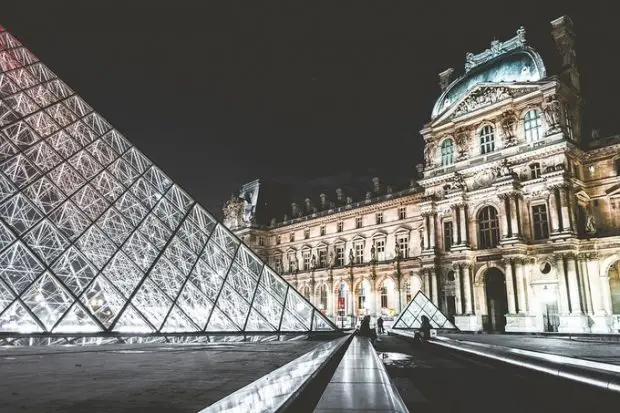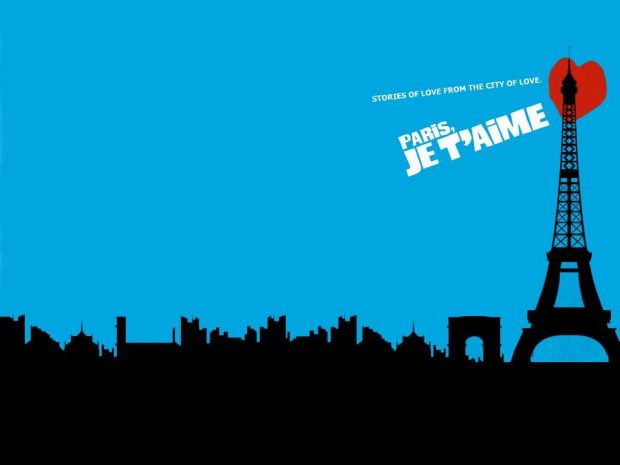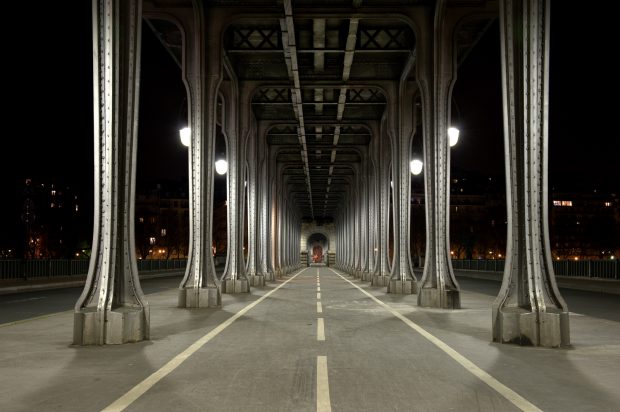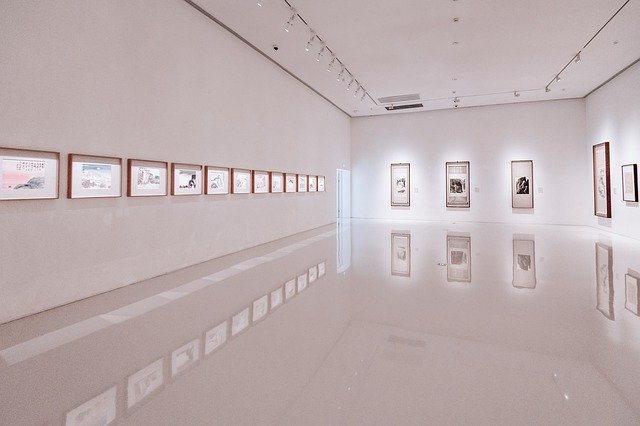Paris is a magnificent city that has been constantly evolving for centuries. Whether the Louvre or the Arc de Triomphe, its monuments have also aged and evolved over time. Let’s discover these monuments and the streets of the capital over the centuries through both old and new photos.
The Arc de Triomphe
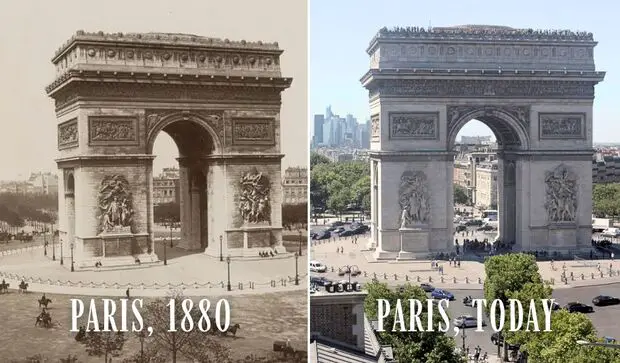
While the Arc de Triomphe itself hasn’t changed since it was completed in 1836, traffic has certainly increased since then.
The vegetation has also increased, but the buildings remain unchanged, retaining their original style.
This consistency shows the attention that France gives to its monuments, conserving this quintessential Parisian landmark over decades.
The View from Arc de Triomphe
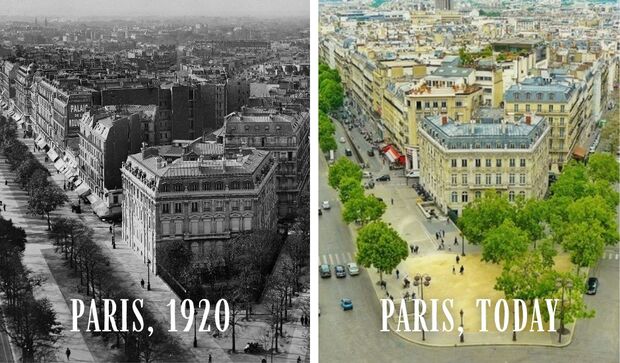
The view from the Arc de Triomphe is truly unforgettable! The view from the top of the Tour Montparnasse is one of my favorites.
In these pictures, you can see that some buildings have been modified over the years and a metro station has been built, seen on the left of the central building in the picture.
The sidewalks have also been reduced to widen the traffic lane.
In the other two photos, you can see that the vegetation is more lush and some buildings have been renovated The Ferris Wheel from the 1900 Paris Exhibition, which was destroyed in 1920, is also visible in the image.
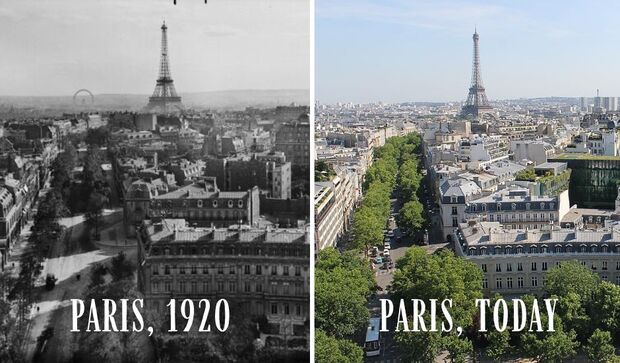
The Garnier Opera
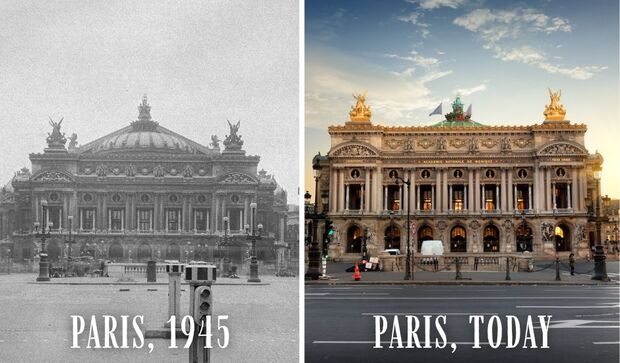
The Garnier Opera is the symbol of art in Paris!
The Opera House hasn’t changed much since it was inaugurated in 1875, but the surroundings have.
The small traffic lights have been removed, making way for a slightly wider road to ease traffic flow. Especially in 1945, when this picture was taken!
Place Vendôme
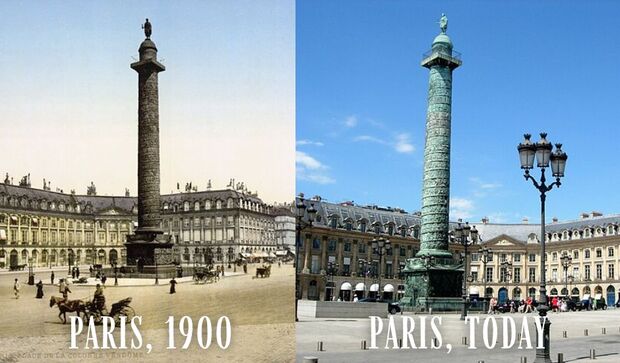
The Place Vendôme, begun in 1686, is the symbol of luxury in the city of fashion.
The square has become much more pedestrian-friendly over the years. Now, there is only a small stretch of road devoted to cars,unlike 100 years ago.
We can also assume that there are more tourists, as the first photo seems to show Parisians going about their business, whereas the recent photo shows a crowd of tourists.
The public has certainly changed over the last hundred years!
Rue Soufflot with the Panthéon in the background
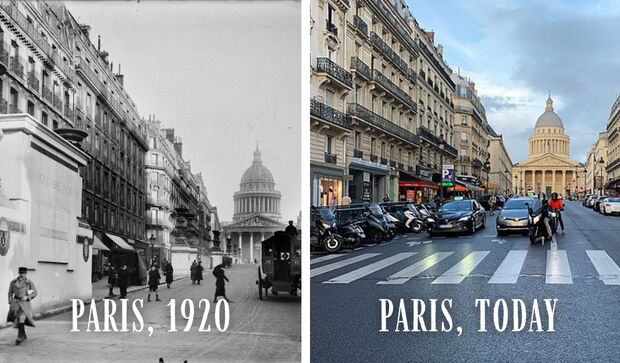
November 11th, 1920 on the Rue Soufflot was a solemn occasion!
As you can see, it was decorated for Armistice Day, with stone pedestals along the street to commemorate the death of Léon Gambetta and the Unknown Soldier, who were later laid to rest in the Panthéon and under the Arc de Triomphe, respectively.
Today, the Panthéon can be admired from the street, adding some cachet to the place.
Notre-Dame de Paris
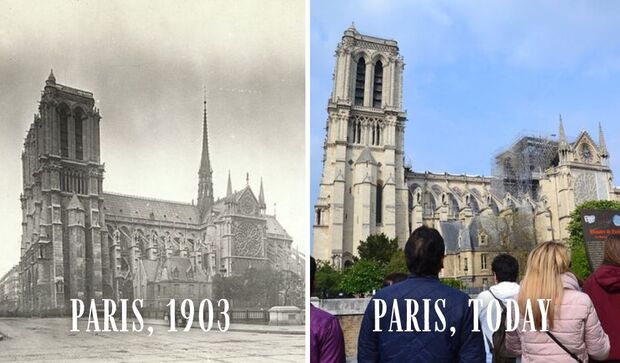
The Notre-Dame has remained much unchanged since its construction ended in 1345. The city has evolved around it without altering the landscape too much.
But as we can see in the second picture, a fire in 2019 caused the cathedral’s spire and part of the nave to burn for almost 15 hours!
As of today, the cathedral is still being renovated, so we can only wait until it is repaired before we can once again admire its splendor.
Eiffel Tower, view from the Trocadéro
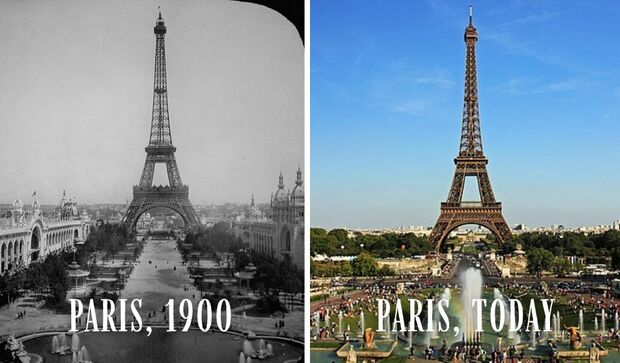
Parisians wanted to demolish this legendary monument after the Paris Exhibition of 1900. Such was the fate met by the Galerie des Machines, a huge exhibition hall used to display all kinds of machinery, which was demolished 20 years later to clear the way for the construction of the Champs de Mars.
The Eiffel Tower is now an essential part of the Parisian skyline, and it would be impossible to imagine Paris without it.
Hôtel de Ville
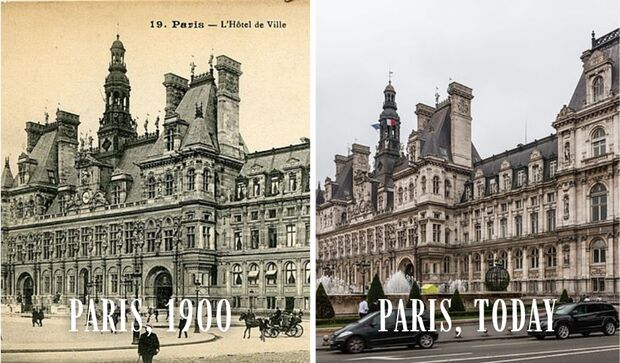
The heart of municipal life in Paris, the city hall has undergone many changes over time, from its initial construction in 1357 to its reconstruction in 1882 following a fire.
We can see that a fountain has been built in front of the building and that the road has been widened to facilitate the movement of larger vehicles.
Place de la Concorde
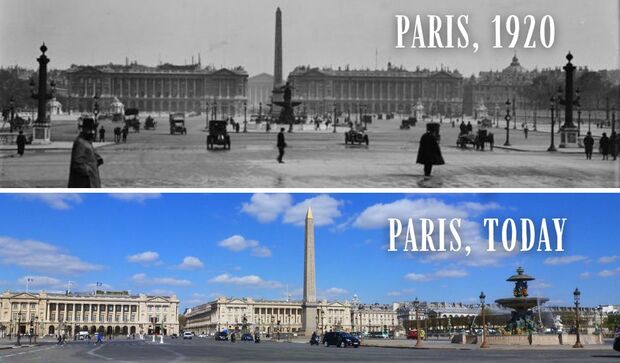
Since 1763, the Place de la Concorde has been part of the five royal squares of Paris.
At 7.56 hectares, the Place de la Concorde is the largest in the capital. The road has been paved and even widened over time, making it easier for cars to drive on.
La Madeleine
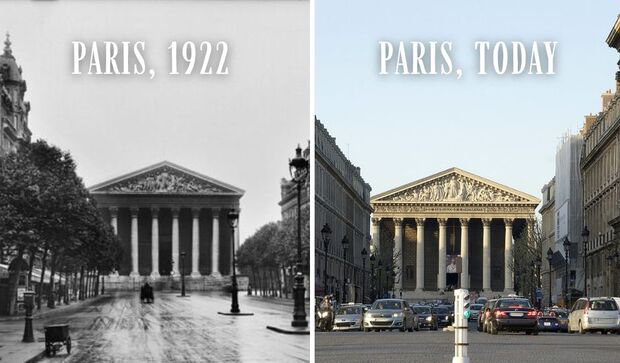
One of the most famous churches in Paris since its construction in 1842, La Madeleine is one of the capital’s most unusual monuments.
Its architecture is reminiscent of the Greco-Roman temples of antiquity.
You can see from both pictures that the road has expanded and that the lampposts in the center of the road have been removed and installed on the sidewalks in place of the trees.
Passage des Panoramas
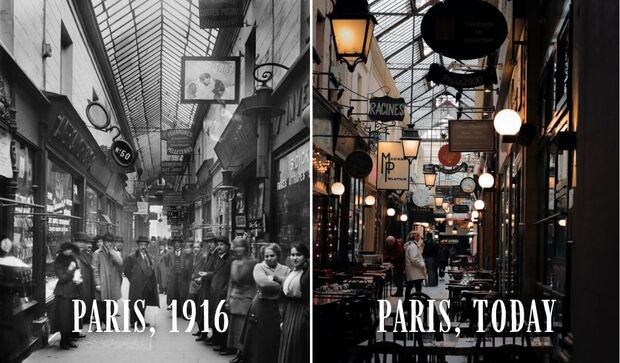
The Passage des Panoramas is the oldest covered passage in Paris!
Built in 1799, the passage has been home to traditional shops for centuries, and as you can see from both pictures, there aren’t that many differences.
Lanterns add to its characteristic picturesque style, and the luxury shops, bootmakers, goldsmiths, toy sellers, and booksellers have given way to a number of small restaurants, stamp and postcard shops, antique shops, and exhibition and art events.
Moulin Rouge
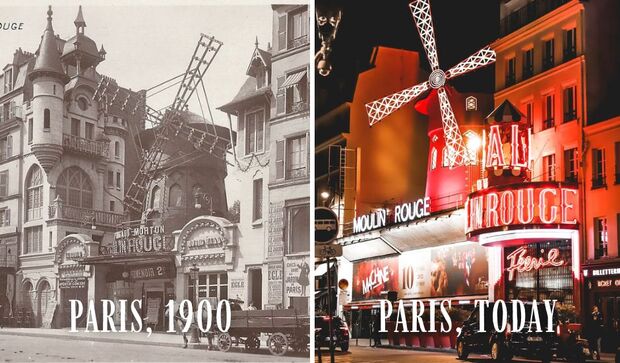
Opened in 1889, The Moulin Rouge is one of the most famous cabarets in the world!
You can see how its façade has changed over time: its iconic windmill has been simplified, and buildings around it have been redesigned so that they no longer have windows, changing the picturesque nature of the building on the left of the picture.
The cabaret’s entrance has also been modified and is now a little brighter than before.
The Louvre
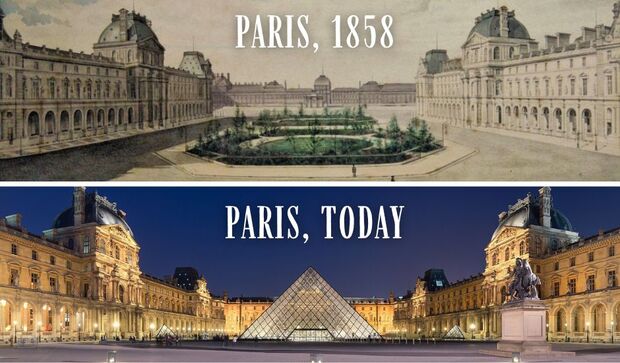
The Royal Louvre Palace, built around 1190, was the largest royal palace until the construction of the Palace of Versailles.
The squares of the Cour Napoléon were removed to build the Louvre Pyramid in 1989, creating a new central entrance for the Louvre Museum.
The historic squares had become parking lots for the museum’s employees and officers, making the appearance less distinguished.
Rue de l’Abreuvoir
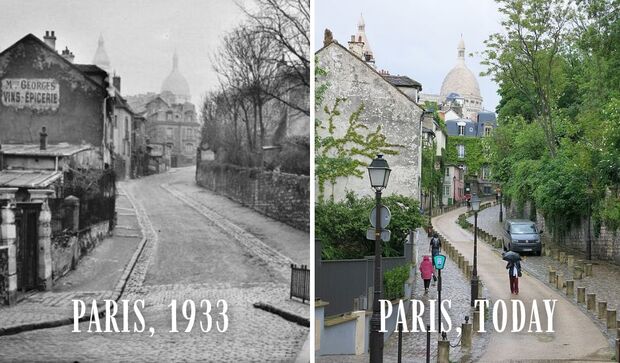
The Rue de l’Abreuvoir is not only one of Paris’s most ancient streets (named around 1325) but is also one of the most picturesque in Montmartre.
You can see that the buildings have been modernized and lampposts and concrete blocks have been added to make the road safer.
The charm of the street hasn’t been damaged by this modernization!
Place des Pyramides
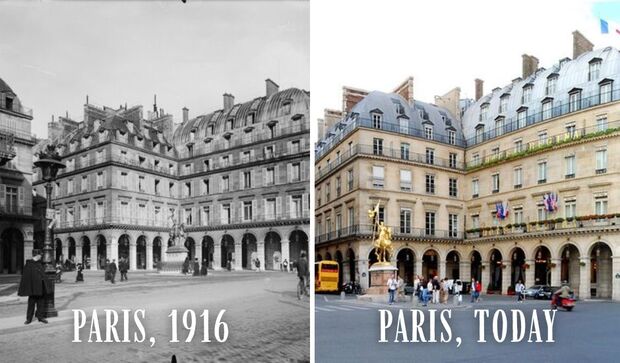
The Place des Pyramides, formerly known as Place de Rivoli because of its location, was inaugurated in 1801.
Between these two pictures, you can see that the buildings have been renovated and look cleaner, and the road has been paved, making it easier for cars to get around.
I aim to share my tips and recommendations for the beautiful country of France. My goal is to help you plan your next adventure, whether it’s a weekend getaway or a once-in-a-lifetime trip. From finding the best hotels and restaurants, to discovering unique activities and sights, I’ve got you covered!

